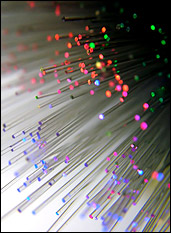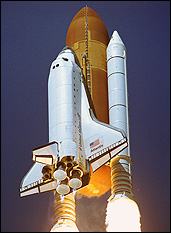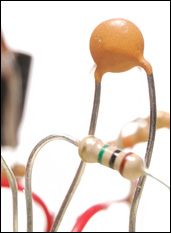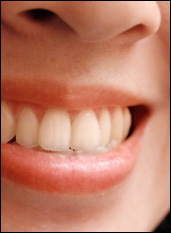A ceramic is a material that is neither metallic nor organic. It may be crystalline, glassy or both crystalline and glassy. Ceramics are typically hard and chemically non-reactive and can be formed or densified with heat. Ceramics are more than pottery and dishes: clay, bricks, tiles, glass, and cement are probably the best-known examples. Ceramic materials are used in electronics because, depending on their composition, they may be semiconducting, superconducting, ferroelectric, or an insulator. Ceramics are also used to make objects as diverse as spark plugs, fiber optics, artificial joints, space shuttle tiles, cooktops, race car brakes, micropositioners, chemical sensors, self lubricating bearings, body armor, and skis.
Here are just a few things made out of ceramics, or parts that contain ceramics:
- Fiber optics used in security systems, communications networks (including phones and the internet), sensors, and imaging devices for tight places, including the human body.
- Heat-resistant, protective tiles on the outside of the space shuttles.
- Electronic components - touch-screens, CPUs, magnetic memory devices, lasers and solar-cells.
- Snowboards and skis, and other sporting goods including golf clubs and tennis rackets.
- Batteries and fuel cells.
- Roads and buildings.

Fiber optics
|

Protective tiles
|

Electronics
|

Snowboard
|
Research in Ceramics by MSE @ UMD
Safer Batteries for EVs: Prof. Eric Wachsman's group develops solid state Li-ion batteries from layered ceramics in support of the growing market of electrical vehicles. By replacing the flammable liquid electrolyte, ceramic-based batteries improve safety (i.e. less likely to ignite following a car accident). More>>

From Digs to Dentistry: Mey Saied, an alumna of the MSE graduate program, used her expertise in ceramics to make better dental crowns while a student here at Maryland. She's also used MSE to study ancient pottery!
Watch a materials video demonstration about ceramics:

Superconductors and Levitation: A superconductor is a material that has no electrical resistance to current flow. A "high" temperature superconductor exhibits this property at liquid nitrogen temperatures (-321°F /-196°C). An important property of superconducting materials is the ability to repel magnetic fields. Placing a magnet above a superconductor will cause the magnet to levitate. Maglev trains make use of this phenomenon, as they are lifted and propelled forward by a magnetic field, free of friction. We can see this effect by placing a magnet atop a superconductor resting in liquid nitrogen. See a movie demonstrating levitation using a superconductor
For more information online:
- The American Ceramic Society
- Weird, Weird Science: Zoom Into Concrete - John Sizemore offers movies on a variety of topics on his Dailymotion site. His "Zoom Into..." series of videos about materials includes Zoom Into Concrete.
Top